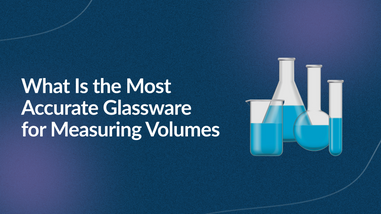- No products in the cart.
Diabetes mellitus is one of the most commonly diagnosed diseases in the world and has substantial comorbidities such as heart disease, kidney failure, and vision problems (cataracts, blindness, etc.). It is a condition in which the body either cannot effectively produce or use insulin to regulate blood glucose levels.
Current treatment mostly centers on physician-guided self-administration of insulin and self-monitoring of glucose. Diabetes is predicted to effect nearly 300 million people worldwide by 2030. This highlights the importance of developing low-cost, accurate, and accessible devices to help patients manage this disease. In this post we will discuss some of the technologies being developed for the fabrication of glucose sensors.
Enzymatic Sensors for Glucose
Over the past few decades, research and development of glucose monitoring devices has largely focused on enzymatic sensors for glucose. These enzymatic sensors rely on an immobilized enzyme, often glucose oxidase (GOx) or glucose dehydrogenase (GDH), to convert glucose in the blood into a glucose acid. However, the use of enzymatic sensors for glucose poses some problems. The production of enzymes can be costly, and these biological proteins can be damaged due to humidity, pH, or heat. This damage can lead to loss of stability and decreased reliability of testing for devices that use this technology.
Non-Enzymatic Sensors for Glucose
Therefore, there has been a lot of buzz around the production of non-enzymatic sensors for glucose. While these non-enzymatic sensors vary widely in composition, most use a metal or a metal oxide to directly oxidize glucose in a sample without the use of enzymes. Common metals include copper, gold, nickel, platinum, and silver (Cu, Au, Ni, Pt, and Ag, respectively). Conversely, common metal oxides used in these reactions are made from cobalt, copper, magnesium, nickel, tin, titanium, and zinc (Co3O4, Cu2O/CuO, MnO2, NiO, SnO2, TiO2, ZnO, respectively). These metals and metal oxides are often combined with nanotechnology (e.g. nano-rods, nano-particles, and nano-sheets) to increase the surface-to-volume ratio of these nanostructures. The combination of these technologies has allowed the generation of electrodes for sensing glucose that are low-cost, stable, highly sensitive, quick, and biocompatible.

Considerations in Designing Glucose Monitoring Devices
When designing any sensor for glucose, it is important that the chemistry be appropriate for testing biological samples. That means that reactions should be able to occur at near-neutral pH, in liquid, and without toxicity to humans. Since the majority of these tests are performed often and at home, a sensitive device that requires less biological sample (blood) is also highly desirable.
Equally importantly, the fabrication of these highly sensitive devices should be low-cost and efficient. The components will ideally be made from materials that are easily accessible and easily manufactured. In this category the non-enzymatic sensors for glucose have the upper hand, since the manufacture of enzymes is often high-cost and low yield. Therefore, non-enzymatic sensors likely have the most promising future moving into the next generation of glucose sensing devices. Many of the metals, particularly those used in the metal oxide-based sensors, are readily available and relatively low-cost. In particular nickel, zinc, and copper oxides have shown promising results in preliminary device research due to their accessibility, reactivity, and low toxicity.
Useful Tools for R & D of Glucose Sensors
Regardless of the type of glucose sensor you work with, your research and development will certainly benefit from having the right tools for the job. Many of these devices center on the use of nanotechnologies that are not visible to the human eye. Therefore, finding the microscope that best suits your needs is crucial to assess and monitor your design. Furthermore, since you’ll be designing these devices to work with fluids of biological pH, it is imperative that you have high quality liquid handling and pH testing tools.
Moreover, the fabrication of medical devices often involves the use of a clean room. This reduces risk of potentially harmful contamination and ensures that every device contains only material that you intend to put in. Keeping your cleanroom in order and stocked with the right cleanroom supplies will make this process more efficient and your devices more reliable. Finally, the chemicals and solvents that you use in fabrication should be of high quality and purity. This will also help in reducing contamination to make not only make reactions more efficient, but also increase safety and cleanliness.
Supplier Reliability and Commitment to Quality Matter
Whether you’re interested in fabricating enzymatic or non-enzymatic sensors for glucose, you will need access to high quality tools, equipment, chemicals, and supplies. Working with a knowledgeable and reliable supplier will help you stay at the top of this competitive field.
__
For over 40 years, Lab Pro has been committed to delivering the highest quality microscopes, chemicals, reagents, and cleaning solutions to medical device and biotechnical laboratories worldwide. Come visit the biggest Lab Supply showroom in California, or contact us online or at 888-452-2776.












































